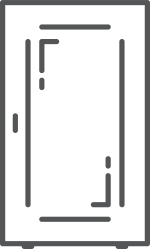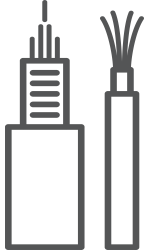Оптоволоконный кабель- современный вид кабеля

The modern look of the cable
Fiber optic is the most modern type of cable that conducts a pulse of light that carries information. Power supply with the help of such a cable will not work, since it can only transmit a signal. Fiber-optic cable has brought data transmission speed to a new level - it has increased significantly.
Fiber Optic Benefits:
• high data transfer rate (up to 10 Gbps);
• is not afraid of environmental influences;
• is not afraid of electromagnetic interference;
• can transmit a signal to almost any distance;
• does not heat up during operation;
• the quality of the signal does not deteriorate even when it is transmitted over long distances;
• no need for a screen to protect against stray currents;
• not attractive for theft, since it contains no metal;
• high level of data transmission security (it is almost impossible to cut into the cable).
Disadvantages of fiber
Of the minuses, it is worth highlighting that the repair of fiber optic is labor-intensive, so if a cable breaks, then special equipment is required. Also, the material is quite brittle, because of which it should be avoided breaking. And the last - in order to convert the signal, you will need to use special equipment.
The main competitor of fiber is twisted pair. This conductor is cheaper, so it is still more expedient in a large number of cases.
Fiber-optic laying
Typically, fiber is routed indoors to telecommunication cabinets, since it is unarmored. But there are also special types of fiber optic cables that can be placed under water or underground (they are armored).
There are several ways of laying optical fiber, and the choice depends on the project itself. Standard methods are cable routing in cable ducts or outdoors. But there are also several innovative ways, such as winding on a ground wire or laying using a horizontal drilling method.
Fiber-optic cable can be laid in buildings using cable ducts, as well as under false ceilings. Cable trays can also be used.
If it is necessary to lay the fiber through the air, then it is necessary to first calculate all the loads acting on it. The tension of the cable laid along the supports should not exceed 60% of its tensile strength.
Power transmission lines and communication lines can act as supports for optical fiber, while the distance between the supports should not exceed 100 meters. Fiberglass, intended for air spacer, contains fiberglass, which increases its strength characteristics.
To locate the fiber in the ground, special armor (most often armored) is used.


















